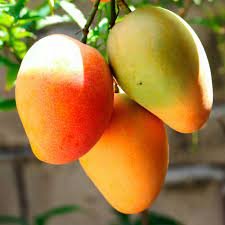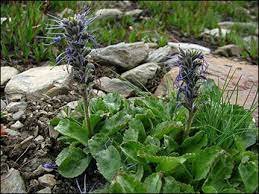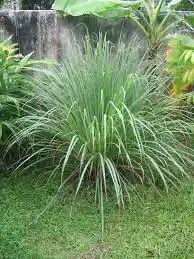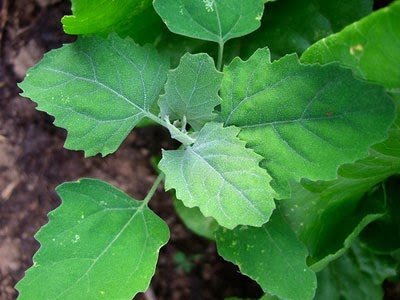Fennel (Foeniculum vulgare) Nutrition Requirements
Nutrition required by Fennel (Foeniculum vulgare) at each stage of its life cycle.
SOIL PREPARATION
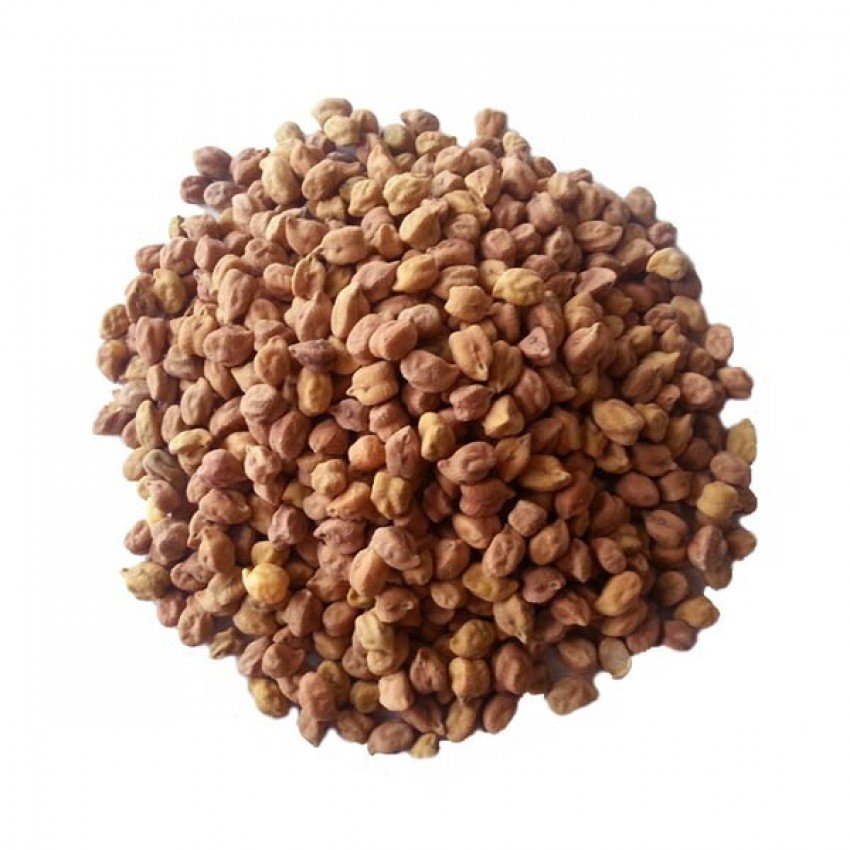
Soil Preparation
Soil preparation is a crucial step in the cultivation of fennel, as it lays the foundation for healthy plant growth and development.
Here's a guide to soil preparation method and nutrition requirements at the soil preparation stage for fennel:
**Soil Preparation Method:**
1. **Site Selection:**
Choose a well-drained site with loamy or sandy loam soil for fennel cultivation. Ensure the site receives full sunlight for at least 6-8 hours a day.
2. **Soil Testing:**
Before planting, conduct a soil test to determine the pH and nutrient levels of the soil. Fennel prefers slightly acidic to neutral soil with a pH range of 6.0 to 7.0.
3. **Soil Amendment:**
Based on the soil test results, amend the soil as needed to optimize fertility and pH levels. Common soil amendments for fennel include organic matter such as compost or well-rotted manure to improve soil structure and fertility.
4. **Tillage:**
Prepare the soil by tilling or plowing to a depth of 8-10 inches to loosen the soil and remove any weeds or debris. Ensure that the soil is finely tilled and free of clumps to facilitate root penetration and nutrient uptake.
5. **Bed Preparation:**
Create raised beds or rows for planting fennel to improve soil drainage and aeration. Beds should be 12-18 inches high and spaced 18-24 inches apart to allow for proper plant spacing and air circulation.
6. **Fertilization:**
Incorporate balanced fertilizer into the soil based on soil test recommendations or general guidelines. Apply a complete fertilizer with a balanced ratio of nitrogen (N), phosphorus (P), and potassium (K) such as 10-10-10 or similar at a rate of 1-2 pounds per 100 square feet.
7. **Mulching:**
After planting, apply a layer of organic mulch such as straw or shredded leaves to conserve soil moisture, suppress weed growth, and regulate soil temperature.
**Nutrition Requirement:**
1. **Nitrogen (N):**
Fennel requires moderate levels of nitrogen for healthy vegetative growth and foliage development. Apply nitrogen fertilizer at planting and as needed during the growing season to maintain optimal nitrogen levels.
2. **Phosphorus (P):**
Phosphorus is essential for root development and overall plant growth. Incorporate phosphorus-containing fertilizers into the soil at planting to promote strong root establishment.
3. **Potassium (K):**
Potassium is important for fennel's overall health and vigor, as well as for enhancing disease resistance. Apply potassium-containing fertilizers at planting and as needed during the growing season to support plant growth and development.
4. **Micronutrients:**
Fennel may benefit from micronutrient supplementation if deficiencies are detected in soil tests or if symptoms of deficiency appear during the growing season. Common micronutrients required by fennel include iron, manganese, zinc, and boron.
5. **pH Adjustment:**
Monitor soil pH regularly and adjust as needed to maintain the optimal pH range of 6.0 to 7.0 for fennel cultivation. Lime can be added to raise pH if soil is too acidic, while sulfur can be added to lower pH if soil is too alkaline.
By following these soil preparation methods and providing the necessary nutrients, you can ensure optimal soil conditions for fennel cultivation and promote healthy plant growth throughout the growing season. Regular soil testing and monitoring are essential for assessing nutrient levels and making adjustments as needed to support fennel production.
Early Growth (Germination to Establishment)

Early Growth
During the early growth stage (germination to establishment) of fennel production, providing the appropriate nutrients is crucial for promoting healthy seedling development and establishment.
Here are the key nutrition requirements for fennel during this stage:
1. **Nitrogen (N):**
Nitrogen is essential for promoting early vegetative growth and leaf development in fennel seedlings. Adequate nitrogen availability encourages vigorous root and shoot growth, enhancing seedling establishment.
- **Application:**
Apply nitrogen-rich fertilizers such as ammonium nitrate or urea at a rate of 20-30 pounds per acre or as per soil test recommendations. Incorporate the fertilizer into the soil before planting or as a side-dressing after seedling emergence.
2. **Phosphorus (P):**
Phosphorus plays a vital role in root development and overall plant growth, especially during the early stages of establishment. Adequate phosphorus availability supports robust root system development and enhances seedling vigor.
- **Application:**
Incorporate phosphorus-containing fertilizers such as diammonium phosphate (DAP) or triple superphosphate (TSP) into the soil at planting time. Apply at a rate of 30-40 pounds per acre or based on soil test recommendations.
3. **Potassium (K):**
Potassium is important for maintaining osmotic balance, improving stress tolerance, and promoting overall plant health in fennel seedlings. Adequate potassium levels support strong root growth and enhance seedling vigor.
- **Application:**
Apply potassium-containing fertilizers such as potassium chloride (muriate of potash) or potassium sulfate at planting time. Incorporate into the soil at a rate of 20-30 pounds per acre or based on soil test recommendations.
4. **Micronutrients:**
While micronutrients are required in smaller quantities, they are essential for various metabolic functions and overall plant health. Adequate micronutrient availability supports healthy seedling growth and development.
- **Application:**
Apply micronutrient-rich fertilizers or foliar sprays containing micronutrients such as iron (Fe), manganese (Mn), zinc (Zn), and boron (B) as needed. Conduct soil tests to identify any micronutrient deficiencies and apply targeted micronutrient supplements accordingly.
5. **pH Adjustment:**
Ensure that the soil pH is within the optimal range of 6.0 to 7.0 for fennel cultivation during the early growth stage. Adjust soil pH as needed using lime to raise pH (if acidic) or sulfur to lower pH (if alkaline) to optimize nutrient availability for seedling growth.
- **Application:**
Conduct a soil pH test and make pH adjustments using lime or sulfur according to soil test recommendations. Incorporate lime or sulfur into the soil before planting to ensure proper pH levels for seedling establishment.
By meeting these nutrition requirements during the early growth stage, you can support healthy seedling development, enhance root and shoot growth, and promote successful establishment of fennel plants for optimal production. Regular soil testing and monitoring of nutrient levels are essential for adjusting fertilization practices to meet the specific needs of fennel seedlings during this critical growth stage.
Tillering Stage (Shoot Development)

Tillering Stage
During the tillering stage (shoot development) of fennel plants, providing the appropriate nutrients is essential for promoting vigorous growth and development of shoots and foliage.
Here are the key nutrition requirements for fennel during this stage:
1. **Nitrogen (N):**
Nitrogen is crucial for promoting healthy vegetative growth, including the development of shoots and foliage. Adequate nitrogen availability supports lush green foliage and robust shoot development in fennel plants during the tillering stage.
- **Application:**
Apply nitrogen-rich fertilizers such as ammonium nitrate or urea at a rate of 50-60 pounds per acre or as per soil test recommendations. Split nitrogen applications may be beneficial, with a portion applied at planting or early growth stage and additional applications during the tillering stage.
2. **Phosphorus (P):**
Phosphorus is important for promoting root development, energy transfer, and overall plant growth in fennel plants. Adequate phosphorus availability supports strong root systems and enhances shoot development during the tillering stage.
- **Application:**
Incorporate phosphorus-containing fertilizers such as diammonium phosphate (DAP) or triple superphosphate (TSP) into the soil at a rate of 40-50 pounds per acre or based on soil test recommendations. Apply before planting or during the early growth stages to support root development and shoot growth.
3. **Potassium (K):**
Potassium plays a vital role in osmotic regulation, stress tolerance, and overall plant health in fennel plants. Adequate potassium availability supports sturdy shoot development, enhances stress tolerance, and promotes overall plant vigor during the tillering stage.
- **Application:**
Apply potassium-containing fertilizers such as potassium chloride (muriate of potash) or potassium sulfate at a rate of 30-40 pounds per acre or based on soil test recommendations. Incorporate into the soil before planting or during the early growth stages to support shoot development and overall plant health.
4. **Micronutrients:**
While micronutrients are required in smaller quantities, they play essential roles in various metabolic functions and overall plant health. Adequate micronutrient availability supports optimal shoot development and foliage growth in fennel plants during the tillering stage.
- **Application:**
Apply micronutrient-rich fertilizers or foliar sprays containing micronutrients such as iron (Fe), manganese (Mn), zinc (Zn), and boron (B) as needed. Conduct soil tests to identify any micronutrient deficiencies and apply targeted micronutrient supplements accordingly.
5. **pH Adjustment:**
Ensure that the soil pH is within the optimal range of 6.0 to 7.0 for fennel cultivation during the tillering stage. Adjust soil pH as needed using lime to raise pH (if acidic) or sulfur to lower pH (if alkaline) to optimize nutrient availability for shoot development.
- **Application:**
Conduct a soil pH test and make pH adjustments using lime or sulfur according to soil test recommendations. Incorporate lime or sulfur into the soil before planting or during the early growth stages to ensure proper pH levels for shoot development.
By meeting these nutrition requirements during the tillering stage, you can promote healthy shoot development, lush foliage growth, and overall plant vigor in fennel plants. Regular soil testing and monitoring of nutrient levels are essential for adjusting fertilization practices to meet the specific needs of fennel plants during this critical growth stage.
Flowering

Flowering
During the flowering stage of fennel, proper nutrition is essential to support robust flower development, seed formation, and overall plant health.
Here are the key nutrition requirements for fennel during the flowering stage:
1. **Potassium (K):**
Potassium plays a crucial role in flower and seed formation, as well as in enhancing plant vigor and stress tolerance during the flowering stage. Adequate potassium availability supports healthy flower development and seed set in fennel plants.
- **Application:**
Apply potassium-containing fertilizers such as potassium chloride (muriate of potash) or potassium sulfate at a rate of 30-40 pounds per acre or based on soil test recommendations. Incorporate into the soil before planting or during the early growth stages to ensure adequate potassium availability during the flowering stage.
2. **Phosphorus (P):**
Phosphorus is important for promoting flower development, seed formation, and overall reproductive success in fennel plants during the flowering stage. Adequate phosphorus availability supports robust flower and seed production.
- **Application:**
Incorporate phosphorus-containing fertilizers such as diammonium phosphate (DAP) or triple superphosphate (TSP) into the soil at a rate of 40-50 pounds per acre or based on soil test recommendations. Apply before planting or during the early growth stages to support flower and seed development.
3. **Nitrogen (N):**
While nitrogen requirements decrease during the flowering stage compared to earlier growth stages, adequate nitrogen availability is still important for supporting plant vigor and maintaining healthy foliage during flower development.
- **Application:**
Apply nitrogen-rich fertilizers such as ammonium nitrate or urea at a reduced rate of 20-30 pounds per acre or based on soil test recommendations. Incorporate into the soil before planting or as a side-dressing during the flowering stage to maintain optimal nitrogen levels.
4. **Calcium (Ca) and Magnesium (Mg):**
Calcium and magnesium are essential secondary nutrients that play important roles in flower and seed development, as well as in overall plant health and vigor during the flowering stage.
- **Application:**
Ensure that the soil contains adequate levels of calcium and magnesium through soil amendments or fertilization as needed. Incorporate calcium-containing fertilizers such as calcium carbonate (lime) or gypsum and magnesium-containing fertilizers such as magnesium sulfate (Epsom salt) as per soil test recommendations.
5. **Micronutrients:**
Micronutrients such as iron (Fe), manganese (Mn), zinc (Zn), and boron (B) are important for supporting various metabolic processes and overall plant health during the flowering stage.
- **Application:**
Apply micronutrient-rich fertilizers or foliar sprays containing micronutrients as needed based on soil test recommendations or visual symptoms of deficiency. Ensure that fennel plants have access to adequate levels of essential micronutrients to support flower development and overall plant health during the flowering stage.
By meeting these nutrition requirements during the flowering stage, you can support healthy flower development, robust seed formation, and overall plant vigor in fennel plants. Regular soil testing and monitoring of nutrient levels are essential for adjusting fertilization practices to meet the specific needs of fennel plants during this critical growth stage.
Matchuration & Ripening

Matchuration & Ripening
During the maturation and ripening stage of fennel, proper nutrition is essential to support the development of mature seeds and enhance seed quality.
Here are the key nutrition requirements for fennel during the maturation and ripening stage:
1. **Potassium (K):**
Potassium is crucial for seed development and maturation in fennel plants during the maturation and ripening stage. Adequate potassium availability supports the filling and development of seeds, as well as enhances seed quality.
- **Application:**
Apply potassium-containing fertilizers such as potassium chloride (muriate of potash) or potassium sulfate at a rate of 30-40 pounds per acre or based on soil test recommendations. Incorporate into the soil before planting or during the early growth stages to ensure adequate potassium availability during seed maturation and ripening.
2. **Phosphorus (P):**
Phosphorus plays a vital role in seed formation, maturation, and overall seed quality in fennel plants during the maturation and ripening stage. Adequate phosphorus availability supports the development of mature seeds and enhances seed vigor.
- **Application:**
Incorporate phosphorus-containing fertilizers such as diammonium phosphate (DAP) or triple superphosphate (TSP) into the soil at a rate of 40-50 pounds per acre or based on soil test recommendations. Apply before planting or during the early growth stages to support seed development and maturation.
3. **Calcium (Ca) and Magnesium (Mg):**
Calcium and magnesium are essential secondary nutrients that play important roles in seed development, maturation, and overall seed quality in fennel plants during the maturation and ripening stage.
- **Application:**
Ensure that the soil contains adequate levels of calcium and magnesium through soil amendments or fertilization as needed. Incorporate calcium-containing fertilizers such as calcium carbonate (lime) or gypsum and magnesium-containing fertilizers such as magnesium sulfate (Epsom salt) as per soil test recommendations.
4. **Micronutrients:**
Micronutrients such as iron (Fe), manganese (Mn), zinc (Zn), and boron (B) are important for supporting various metabolic processes and overall seed quality in fennel plants during the maturation and ripening stage.
- **Application:**
Apply micronutrient-rich fertilizers or foliar sprays containing micronutrients as needed based on soil test recommendations or visual symptoms of deficiency. Ensure that fennel plants have access to adequate levels of essential micronutrients to support seed maturation and enhance seed quality during the maturation and ripening stage.
By meeting these nutrition requirements during the maturation and ripening stage, you can support the development of mature seeds, enhance seed quality, and promote overall seed yield in fennel plants. Regular soil testing and monitoring of nutrient levels are essential for adjusting fertilization practices to meet the specific needs of fennel plants during this critical growth stage.
Harvesting

Harvesting
During the harvesting stage of fennel (Foeniculum vulgare) cultivation, there are no specific nutrition requirements as the plant is harvested for its seeds or bulbs rather than its foliage. However, there are certain procedures that need to be followed to ensure a successful harvest.
Here's a guide on the nutrition requirements and harvesting procedures for fennel:
1. **Timing of Harvesting:**
- Fennel seeds are typically harvested when they are fully mature and have turned brown on the plant. The seeds should be firm and dry when touched.
- For fennel bulbs, they are usually harvested when they have reached the desired size, typically around 3-4 inches in diameter.
2. **Harvesting Method:**
- Fennel seeds can be harvested by cutting the seed heads from the plant using sharp shears or pruners. It's essential to leave a portion of the stem attached to the seed head for drying and handling purposes.
- For fennel bulbs, they can be harvested by carefully digging around the base of the plant to loosen the soil and gently lifting the bulbs from the ground.
3. **Drying:**
- After harvesting the fennel seeds, they need to be dried to reduce moisture content and ensure long-term storage. The seed heads can be tied into bundles and hung upside down in a well-ventilated area away from direct sunlight.
- Fennel bulbs do not require drying but should be used or stored promptly after harvesting to maintain freshness.
4. **Cleaning:**
- Once the fennel seeds are fully dried, they can be threshed to separate the seeds from the seed heads. This can be done by rubbing the seed heads between your hands or using a mechanical thresher.
- After threshing, the seeds should be cleaned to remove any remaining plant debris, chaff, or impurities. This can be done using sieves or winnowing methods.
5. **Storage:**
- The cleaned fennel seeds should be stored in airtight containers or bags in a cool, dry place away from sunlight. Properly stored fennel seeds can retain their quality for up to one year.
- Fennel bulbs should be stored in the refrigerator and used within a few days to maintain freshness.
6. **Post-Harvest Management:**
- After harvesting, it's essential to clean the harvesting equipment and the area to prevent the spread of pests and diseases.
- Proper sanitation practices should be followed to maintain the overall hygiene of the harvesting and processing area.
By following these procedures during the harvesting stage, you can ensure a successful fennel harvest with high-quality seeds or bulbs suitable for culinary and medicinal use.
Fennel (Foeniculum vulgare) Farming Economics
Get details of Profitability and cost estimate in growing Fennel (Foeniculum vulgare) per acres of Land.
SOIL PREPARATION

Soil Preparation
Early Growth (Germination to Establishment)

Early Growth
Tillering Stage (Shoot Development)

Tillering Stage
Flowering

Flowering
Matchuration & Ripening

Matchuration & Ripening
Harvesting

Harvesting
Fennel (Foeniculum vulgare) Disease Details
Nutrition required by Fennel (Foeniculum vulgare) at each stage of its life cycle.
SOIL PREPARATION

Soil Preparation
During the soil preparation stage for fennel seed cultivation, several diseases and pests can affect the crop.
Here are some common issues and precautions to prevent them:
1. **Damping-off:**
Damping-off is a fungal disease that affects seeds and seedlings, causing them to rot at the soil line. It can be exacerbated by overly wet conditions and poor soil drainage.
**Precautions:**
- Ensure proper soil drainage by amending heavy soils with organic matter.
- Avoid overwatering, especially during the soil preparation stage, to prevent waterlogging.
- Use high-quality, disease-free seeds for planting.
2. **Soilborne Pathogens:**
Soilborne pathogens such as Fusarium, Pythium, and Rhizoctonia can infect fennel seeds and seedlings, leading to damping-off, root rot, and other diseases.
**Precautions:**
- Practice crop rotation to reduce the buildup of soilborne pathogens.
- Solarize the soil by covering it with transparent plastic to kill soilborne pathogens through heat during the summer months.
- Apply fungicides or biological control agents according to label instructions if necessary.
3. **Weeds:**
Weeds compete with fennel seeds for nutrients, water, and sunlight, reducing crop yields and increasing the risk of diseases and pests.
**Precautions:**
- Remove weeds from the planting area before soil preparation.
- Use mulch to suppress weed growth and conserve soil moisture.
4. **Nematodes:**
Nematodes are microscopic roundworms that can feed on fennel roots, leading to stunted growth and reduced yields.
**Precautions:**
- Conduct soil tests to detect nematode presence before planting.
- Practice crop rotation with nematode-resistant crops.
- Use nematode-suppressing cover crops or soil fumigation if nematodes are detected.
5. **Insects:**
Soil-dwelling insects such as wireworms, cutworms, and grubs can damage fennel seeds and seedlings by feeding on roots and stems.
**Precautions:**
- Monitor the soil for insect activity before planting.
- Use insecticidal treatments or biological control agents as needed.
- Practice crop rotation to disrupt the life cycle of soil-dwelling insects.
6. **Verticillium Wilt:**
Verticillium wilt is a fungal disease that affects fennel plants, causing wilting, yellowing of leaves, and eventual plant death.
**Precautions:**
- Plant disease-resistant fennel varieties if available.
- Ensure proper soil drainage and avoid water stress to reduce susceptibility to verticillium wilt.
By following these precautions during the soil preparation stage, you can minimize the risk of diseases and pests affecting fennel seed production and promote healthy crop growth. Regular monitoring and integrated pest management practices are essential for early detection and management of potential issues.
Early Growth (Germination to Establishment)

Early Growing
During the early growth stage of fennel (germination to establishment), several diseases and pests can affect the crop.
Here are some common issues and precautions to prevent them:
1. **Damping-off:**
Damping-off is a fungal disease that affects seeds and seedlings, causing them to rot at the soil line. It can be exacerbated by overly wet conditions and poor soil drainage.
**Precautions:**
- Ensure proper soil drainage by amending heavy soils with organic matter.
- Avoid overwatering, especially during the early growth stage, to prevent waterlogging.
- Use high-quality, disease-free seeds for planting.
2. **Seedling Diseases:**
Various seedling diseases caused by fungi such as Pythium, Rhizoctonia, and Fusarium can affect fennel seedlings, causing damping-off, root rot, and seedling death.
**Precautions:**
- Use disease-free seeds and ensure proper seed treatment if necessary.
- Maintain good soil drainage and avoid overwatering.
- Apply fungicides or biological control agents according to label instructions if seedling diseases are detected.
3. **Aphids:**
Aphids are common pests that can infest fennel plants during the early growth stage, feeding on sap and causing distorted growth, yellowing leaves, and stunted development.
**Precautions:**
- Monitor plants regularly for aphid infestations.
- Use insecticidal soap or neem oil to control aphids if populations become problematic.
- Encourage natural predators such as ladybugs and lacewings to help manage aphid populations.
4. **Cutworms:**
Cutworms are caterpillars that feed on young fennel seedlings, cutting them off at the soil line and causing plant loss.
**Precautions:**
- Protect seedlings with physical barriers such as collars made from cardboard or plastic.
- Apply insecticides or biological control agents targeting cutworms if necessary.
- Practice crop rotation to disrupt cutworm life cycles.
5. **Weeds:**
Weeds compete with fennel seedlings for nutrients, water, and sunlight, reducing crop yields and increasing the risk of diseases and pests.
**Precautions:**
- Remove weeds from the planting area before sowing seeds or transplanting seedlings.
- Use mulch to suppress weed growth and conserve soil moisture.
- Apply pre-emergent herbicides if weed pressure is high.
6. **Leafhoppers:**
Leafhoppers are small insects that feed on fennel leaves, causing stippling, yellowing, and reduced plant vigor.
**Precautions:**
- Monitor plants for leafhopper activity and damage.
- Use insecticidal soap or neem oil to control leafhoppers if populations become problematic.
- Remove nearby weed hosts that may harbor leafhoppers.
By following these precautions during the early growth stage, you can minimize the risk of diseases and pests affecting fennel plants and promote healthy crop establishment. Regular monitoring and integrated pest management practices are essential for early detection and management of potential issues.
Tillering Stage (Shoot Development)

Tillering Stage
During the tillering stage (shoot development) of fennel, several diseases and pests can affect the crop.
Here are some common issues and precautions to prevent them:
1. **Powdery Mildew:**
Powdery mildew is a fungal disease that appears as white powdery spots on the leaves and stems of fennel plants, inhibiting photosynthesis and reducing plant vigor.
**Precautions:**
- Plant disease-resistant fennel varieties if available.
- Maintain adequate spacing between plants to promote air circulation and reduce humidity levels.
- Apply fungicides containing sulfur or potassium bicarbonate preventively or at the first sign of infection.
2. **Aphids:**
Aphids can infest fennel plants during the tillering stage, feeding on sap and causing distorted growth, yellowing leaves, and stunted development.
**Precautions:**
- Monitor plants regularly for aphid infestations.
- Use insecticidal soap or neem oil to control aphids if populations become problematic.
- Encourage natural predators such as ladybugs and lacewings to help manage aphid populations.
3. **Cutworms:**
Cutworms are caterpillars that feed on fennel shoots and leaves, causing damage and reducing plant growth.
**Precautions:**
- Protect plants with physical barriers such as collars made from cardboard or plastic.
- Apply insecticides or biological control agents targeting cutworms if necessary.
- Practice crop rotation to disrupt cutworm life cycles.
4. **Downy Mildew:**
Downy mildew is a fungal disease that affects fennel plants, causing yellowing of leaves, stunted growth, and eventual plant death.
**Precautions:**
- Avoid overhead irrigation to reduce leaf wetness and humidity levels.
- Provide adequate spacing between plants for air circulation.
- Apply fungicides containing copper or mancozeb preventively or at the first sign of infection.
5. **Thrips:**
Thrips are tiny insects that feed on fennel leaves, causing stippling, silvering, and distortion of leaves.
**Precautions:**
- Monitor plants regularly for thrips infestations.
- Use insecticidal soap, neem oil, or spinosad-based insecticides to control thrips if populations become problematic.
- Remove nearby weed hosts that may harbor thrips.
6. **Weeds:**
Weeds compete with fennel plants for nutrients, water, and sunlight, reducing crop yields and increasing the risk of diseases and pests.
**Precautions:**
- Remove weeds from the planting area and between rows regularly.
- Use mulch to suppress weed growth and conserve soil moisture.
- Apply pre-emergent herbicides if weed pressure is high.
By following these precautions during the tillering stage, you can minimize the risk of diseases and pests affecting fennel plants and promote healthy shoot development. Regular monitoring and integrated pest management practices are essential for early detection and management of potential issues.
Flowering

Flowering
During the flowering stage of fennel, several diseases and pests can affect the crop.
Here are some common issues and precautions to prevent them:
1. **Downy Mildew:**
Downy mildew is a fungal disease that affects fennel plants, causing yellowing of leaves, stunted growth, and eventual plant death. It can be particularly problematic during periods of high humidity.
**Precautions:**
- Avoid overhead irrigation to reduce leaf wetness and humidity levels.
- Provide adequate spacing between plants for air circulation.
- Apply fungicides containing copper or mancozeb preventively or at the first sign of infection.
2. **Aphids:**
Aphids can infest fennel plants during the flowering stage, feeding on sap and causing distorted growth, yellowing leaves, and stunted development.
**Precautions:**
- Monitor plants regularly for aphid infestations.
- Use insecticidal soap or neem oil to control aphids if populations become problematic.
- Encourage natural predators such as ladybugs and lacewings to help manage aphid populations.
3. **Thrips:**
Thrips are tiny insects that feed on fennel flowers and leaves, causing stippling, silvering, and distortion of leaves.
**Precautions:**
- Monitor plants regularly for thrips infestations.
- Use insecticidal soap, neem oil, or spinosad-based insecticides to control thrips if populations become problematic.
- Remove nearby weed hosts that may harbor thrips.
4. **Powdery Mildew:**
Powdery mildew can also affect fennel plants during the flowering stage, appearing as white powdery spots on leaves and stems.
**Precautions:**
- Maintain adequate spacing between plants to promote air circulation and reduce humidity levels.
- Apply fungicides containing sulfur or potassium bicarbonate preventively or at the first sign of infection.
5. **Whiteflies:**
Whiteflies are small insects that feed on fennel leaves and flowers, causing yellowing, wilting, and reduced plant vigor.
**Precautions:**
- Monitor plants regularly for whitefly infestations.
- Use yellow sticky traps to monitor and capture adult whiteflies.
- Use insecticidal soap, neem oil, or spinosad-based insecticides to control whiteflies if populations become problematic.
6. **Weeds:**
Weeds compete with fennel plants for nutrients, water, and sunlight, reducing crop yields and increasing the risk of diseases and pests.
**Precautions:**
- Remove weeds from the planting area and between rows regularly.
- Use mulch to suppress weed growth and conserve soil moisture.
- Apply pre-emergent herbicides if weed pressure is high.
By following these precautions during the flowering stage, you can minimize the risk of diseases and pests affecting fennel plants and promote healthy flower development. Regular monitoring and integrated pest management practices are essential for early detection and management of potential issues.
Matchuration & Ripening

Matchuration & Ripening
During the maturation and ripening stage of fennel, several diseases and pests can affect the crop.
Here are some common issues and precautions to prevent them:
1. **Seed Rot and Mold:**
During maturation and ripening, fennel seeds may be susceptible to rot and mold if they are exposed to excessive moisture or humidity.
**Precautions:**
- Avoid overwatering and ensure proper soil drainage to prevent waterlogged conditions.
- Allow adequate air circulation around the plants to reduce humidity levels.
- Harvest fennel seeds promptly when they are fully mature and dry to prevent them from becoming overly moist and susceptible to rot.
2. **Seed Shattering:**
Fennel seeds can shatter and disperse prematurely if they are not harvested at the correct stage of maturity.
**Precautions:**
- Monitor the maturity of fennel seeds closely and harvest them promptly when they are fully mature but before they begin to shatter.
- Handle harvested seed heads carefully to minimize seed shattering during harvesting and processing.
3. **Bird Damage:**
Birds may feed on maturing fennel seeds, causing losses and reducing seed yields.
**Precautions:**
- Use bird netting or other physical barriers to protect maturing fennel seed heads from bird damage.
- Harvest fennel seeds promptly when they are fully mature to minimize exposure to bird predation.
4. **Storage Pests:**
After harvesting, fennel seeds may be susceptible to infestation by storage pests such as weevils, beetles, and moths if they are not stored properly.
**Precautions:**
- Ensure that harvested fennel seeds are thoroughly dried before storage to reduce moisture content and discourage pest infestation.
- Store fennel seeds in airtight containers or sealed bags to prevent access by pests.
- Consider using natural pest deterrents such as bay leaves or neem leaves in stored fennel seeds to repel pests.
5. **Fungal Diseases:**
Fungal diseases such as Alternaria blight or Botrytis blight may affect maturing fennel seeds, causing rot and reducing seed quality.
**Precautions:**
- Provide adequate spacing between fennel plants to promote air circulation and reduce humidity levels, which can help minimize the risk of fungal diseases.
- Monitor plants regularly for signs of fungal diseases, such as leaf spots or rot, and take appropriate measures such as removing affected plant parts or applying fungicides if necessary.
By following these precautions during the maturation and ripening stage, you can minimize the risk of diseases and pests affecting fennel seeds and promote the production of high-quality seeds. Regular monitoring and timely intervention are essential for preventing and managing potential issues.
Harvesting

Harvesting
During the harvesting stage of fennel seed, several issues related to diseases and pests can affect the crop.
Here are some common problems and precautions to prevent them:
1. **Seed Contamination:**
Fennel seeds can be contaminated with soil, debris, or other foreign matter during harvesting, handling, and processing.
**Precautions:**
- Harvest fennel seeds in dry weather conditions to minimize soil contamination.
- Use clean harvesting equipment and containers to prevent contamination.
- Clean and inspect seeds thoroughly after harvesting to remove any debris or foreign matter.
2. **Seedborne Diseases:**
Fungal pathogens can infect fennel seeds and cause seedborne diseases, which can reduce seed quality and viability.
**Precautions:**
- Harvest fennel seeds promptly when they are fully mature and dry to minimize the risk of fungal infection.
- Avoid harvesting seeds from plants showing signs of disease or pest damage.
- Clean and disinfect harvesting equipment between uses to prevent the spread of pathogens.
3. **Storage Pests:**
Insects such as weevils, beetles, and moths can infest stored fennel seeds, causing losses and reducing seed quality.
**Precautions:**
- Ensure that harvested fennel seeds are thoroughly dried before storage to reduce moisture content and discourage pest infestation.
- Store fennel seeds in airtight containers or sealed bags to prevent access by pests.
- Consider using natural pest deterrents such as bay leaves or neem leaves in stored fennel seeds to repel pests.
4. **Bird Damage:**
Birds may feed on harvested fennel seeds, causing losses and reducing seed yields.
**Precautions:**
- Store harvested fennel seeds in protected areas or containers to minimize access by birds.
- Use bird netting or other physical barriers to protect stored seeds from bird damage.
5. **Fungal Growth:**
Improper storage conditions such as high humidity or inadequate ventilation can promote fungal growth on stored fennel seeds.
**Precautions:**
- Ensure that stored fennel seeds are kept in a cool, dry, and well-ventilated environment to minimize the risk of fungal growth.
- Monitor stored seeds regularly for signs of fungal growth and discard any contaminated seeds.
By following these precautions during the harvesting and post-harvest stages, you can minimize the risk of diseases and pests affecting fennel seeds and promote the production of high-quality seeds. Regular monitoring and proper storage conditions are essential for preventing and managing potential issues.





